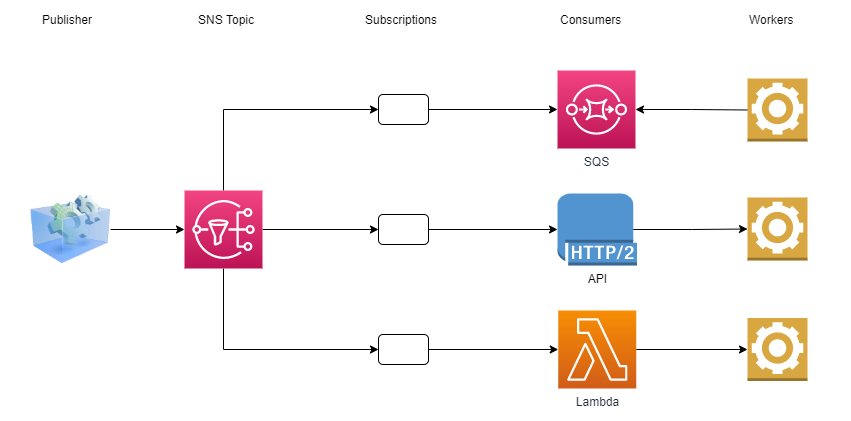How to Implement the Pub/Sub Pattern with .NET, Amazon SNS and CloudEvents
There is no shortage of technologies that allow for building pub-sub messaging systems. Off the cuff, I can think of NServiceBus, Azure Service Bus, RabbitMQ, MassTransit, etc. However, Amazon Simple Notification Service or SNS, may be the easiest to implement as well as the most flexible solution.

What Exactly is the Pub-Sub Pattern?
In essence, the pub-sub pattern or publish-subscribe pattern, is a messaging pattern in software architecture where a publisher creates a message and sends it to a predetermined location for one or more subscribers to consume. The predetermined location has different names and has differing structures in different systems. However, in this tutorial we will refer to that predetermined location as a “topic”. To look at it from the consumer’s perspective, a consumer would subscribe to a topic of interest and when the publisher publishes a message to the topic, the consumer and any other subscribed consumers would receive the message.
